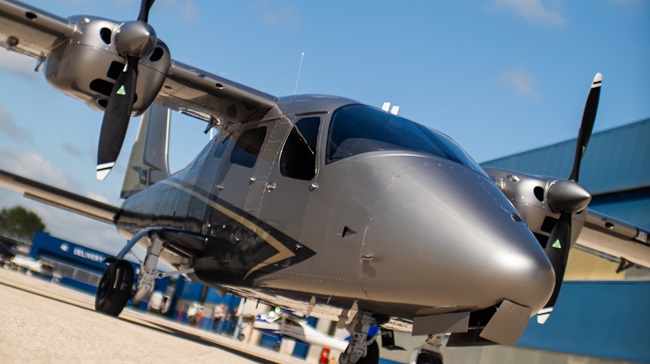AOPA Photographer Chris Rose’s stunning image of a Cirrus SR22 model G5 over Alaska’s Glacier Bay won top honors from AOPA Pilot magazine readers as their favorite cover of 2013, according to a recent online poll (www.aopa.org/News-and-Video/All-News/2014/March/Pilot/pilot-cover-vote.aspx). The October issue photo was shot around 9:30 p.m. in mid-June near the time of the summer solstice, so the sun is still high overhead. AOPA Senior Photographer Mike Fizer’s December issue cover image of a magnificent Grumman Albatross near Catalina Island in Southern California was second with 17 percent, followed by the June cover photo by Rose of a gleaming de Havilland DHC-2 float Beaver made on the East Coast of Florida.
How to fly in the San Francisco Bay area
BY Jill W. Tallman
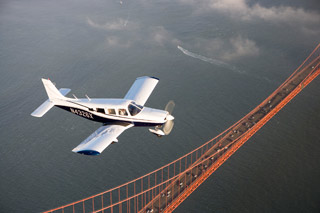 The Rock. The Golden Gate Bridge. Sports arenas. The Presidio. All of these sights and more are the highlights of a relatively short flight within the San Francisco Bay area. CFI and glass cockpit expert Max Trescott calls it “the most beautiful flying of anywhere in the country,” and—while he may hold a certain bias, because he’s based in the Bay area—it’s hard to argue with him.
The Rock. The Golden Gate Bridge. Sports arenas. The Presidio. All of these sights and more are the highlights of a relatively short flight within the San Francisco Bay area. CFI and glass cockpit expert Max Trescott calls it “the most beautiful flying of anywhere in the country,” and—while he may hold a certain bias, because he’s based in the Bay area—it’s hard to argue with him.
But the ability to spy all this natural and man-made phenomena from our unique perspective comes with a big fat warning label. This is one congested area. Actually, “congested” doesn’t adequately describe the Spirograph-like chunks of Class B and Class C that belong to San Francisco International and Metropolitan Oakland International, respectively. Their shelves loom large over Hayward and San Marcos airports in their Class D airspace.
Air traffic controllers expertly separate commercial and GA traffic and keep things moving like a well-oiled machine. GA pilots try to return the favor by being crisp and professional in their radio communications; understanding where they are at all times; and paying close attention for their N-number amidst all the chatter. Nobody wants to strain that relationship. Out-of-towners are highly encouraged to take a familiarization flight. San Carlos Flight Center (www.sancarlosflight.com) offers them; they’re not sightseeing flights, but meant to educate pilots on local customs and procedures.
Email [email protected]
What local pilots know:
Frequent fog and low-lying stratus clouds that arrive with the marine layer can put a damper on your plans. “When you get good weather, you go,” said one pilot based at nearby Palo Alto Airport.
ATC generally approves one of three VFR transitions through the Class Bravo—however they aren’t published on terminal charts.
A crosswind departure from San Carlos takes you across the Belmont Slough—a waterway that borders the edge of the San Carlos Class D airspace—out over the San Francisco Bay toward Oakland Airport. You’ll see the San Mateo bridge, but don’t loiter here. Matthew Herbert, a commercial pilot who conducts numerous sightseeing flights for San Carlos Flight Center, says he adds a little power to expedite this portion of the flight. “Right there between the shoreline and the midpoint of the bridge, all of the approaches going into San Francisco go right in on top of us,” he explains. “We’re at 1,200 feet and they’re coming in not even a thousand feet above us.”
You may be instructed to circle over Candlestick Park to avoid wake turbulence from a Boeing 777 taking off from SFO.
What you’ll see
Departing San Carlos Airport to the northwest, you’ll immediately spy a cluster of futuristic-looking office buildings that make up the Oracle Corp. complex.
Turning toward Oakland Airport, look for the double pyramid shape of Mount Diablo to the southeast.
Overflying the city of Oakland, you’ll see Oakland-Alameda County Coliseum. Turn back to the Bay to overfly Treasure Island, a manmade landform that was built to stage the 1939 World’s Fair. Its naval station’s auxiliary air station was designed for airships, blimps, dirigibles, airplanes, and seaplanes.
Nearby Alcatraz Island housed the infamous high-security prison known as “The Rock” from 1934 to 1963. Now it’s a national historic landmark. During the 2013 government shutdown, the National Park Service closed the site—but aerial tours continued, providing the only means to get a good look at the island.
Overfly the Golden Gate Bridge, which turned 75 in May 2012, and you may see a seaplane several hundred feet below you touring the same landmark. Then head south to spy the Presidio with its historic Crissy airfield.
Follow Highway 101 south back to San Carlos, and glimpse the reservoirs and the San Andreas Fault en route.
Video Extra: This online video details how to fly in the Bay Area. First in a series.
Pilot Products
New tools for basic needs: An iPad application, headphones, and flight bag are reviewed
By Ian J. Twombly
Bose QC20 in-ear headphones
 If you’re like most pilots who own a Bose aviation headset, you swear by its performance. Sometimes there are cases when we don’t want a full headset, though. Maybe it’s a son or daughter who refuses to be clamped, or you have an airline trip when wearing a headset would seem a bit strange.
If you’re like most pilots who own a Bose aviation headset, you swear by its performance. Sometimes there are cases when we don’t want a full headset, though. Maybe it’s a son or daughter who refuses to be clamped, or you have an airline trip when wearing a headset would seem a bit strange.
In these cases you can keep it in the Bose family with the QC20 in-ear headphones. These are eerily quiet, incredibly comfortable in-ear headphones with active noise canceling. The company won’t say how much ambient noise is reduced, but it’s safe to say they are worthy alternative for your non-headset-wearing passengers.
Other than the price, which is characteristically steep, and the fact they must be recharged through a USB port, they are pretty close to perfect. That they double as a cellphone earpiece with microphone and great music player is just gravy.
Price: $299.95
Contact: www.bose.com
Gyronimo performance applications
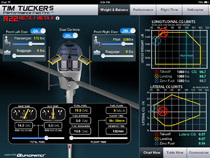 It’s hard to get excited about weight and balance and performance iPad applications, but Gyronimo has created a series of beautiful, interactive apps centered on the basic tasks of computing weight and balance and calculating performance data.
It’s hard to get excited about weight and balance and performance iPad applications, but Gyronimo has created a series of beautiful, interactive apps centered on the basic tasks of computing weight and balance and calculating performance data.
We tested the Robinson R22 and R44 applications, which the company co-authored with longtime Robinson pilot Tim Tucker. Users interact with the app simply by sliding a bar left or right to increase or decrease the parameter. It might be weight, temperature, fuel, or whatever else it is you’re trying to compute. Anytime a limit is exceeded, the screen turns red, making it very obvious you can’t do what you’re trying to do. As the slider moves, so too does the bullseye in the center of gravity envelope or on the performance chart. Simply put, you can calculate a weight and balance and all your performance data in fewer than two minutes. Given how fun it is to use, pilots will be hoping to fly just to be able to use the application.
Price: Varies depending on aircraft model
Contact: www.gyronimo.com
Sporty’s Flight Gear collection
 Reflecting an evolving user, Sporty’s has redesigned its Flight Gear bag collection. Materials remain of high standard, but the design and configuration are all new.
Reflecting an evolving user, Sporty’s has redesigned its Flight Gear bag collection. Materials remain of high standard, but the design and configuration are all new.
We tested the Navigator bag, and we remain impressed with the durability and construction. Some of the madness from the flight bag pocket race is gone, and in its place is a more sane approach that focuses on quality over quantity. There are three separate and distinct areas to store headsets, a file folder pocket for charts, a padded iPad pocket, and pockets dedicated for cords and accessories. There’s also a large open middle section that can be used for a variety of other items. Given its good construction and thoughtful design, the bag is also a pretty good bargain.
Price: $99
Contact: www.sportys.com
This month on the AOPA JAY: Glacier Landing
Have you ever wondered what it’s like to be a glacier pilot in Alaska? Find out for yourself in this breathtaking simulation scenario for the AOPA Jay desktop training device. You’ll fly a Maule 260-C skiplane from Talkeetna up the Ruth Glacier to the Don Sheldon Amphitheater. You’ll land on the glacier below the historic Mountain House, pick up two ski mountaineers, and fly them back down to Talkeetna. Along the way you’ll see why this area has been called “One of the 10 most incredible places on Earth.”
Learn more about the AOPA Jay online (www.aopa.org/Products-andServices/About-the-Jay).
Airport stories
‘Benign neglect’
Venice Airport has a new lease on life
By Julie Summers Walker
 Venice Municipal airport in Florida—once a victim of “benign neglect” according to its supporters—is in trouble no more. This historic former army base on the Gulf Coast has turned itself around, thanks in great part to a small cadre of supporters who never stopped believing.
Venice Municipal airport in Florida—once a victim of “benign neglect” according to its supporters—is in trouble no more. This historic former army base on the Gulf Coast has turned itself around, thanks in great part to a small cadre of supporters who never stopped believing.
Venice Municipal faced opposition in this small resort town (population 21,000), which welcomes “snowbirds” January through March, when northerners trek south to Florida’s sunny shores. The airport was a training base and later an active general aviation airport, but when economic belts tightened the airport began to suffer from “benign neglect,” according to Paul Hollowell, a member of the Venice Airport Society Inc. (VASI).
And because of the city’s neglect, the airport’s detractors started to nibble at the airport’s 835-acre footprint. They wanted to shorten one of the airport’s two 5,000-foot runways. They wanted to deny new business. They wanted to take airport land. They started a smear campaign, which called out the airport for noise, jet traffic, and being a bad neighbor (one of the 9/11 terrorists had trained here).
It was a small group of airport supporters (VASI) working with local, state, and federal politicians and groups such as AOPA who eventually turned the tide for Venice Municipal (see “What They Learned” at right). Although Venice’s airport today is thriving, its supporters recognize that saving this airport has been a battle, but it is part of a larger war.
Email [email protected]
Venice municipal today
Venice Municipal Airport (VNC) is self supporting and generates its own funds. As city council member Jeanette Gates says, “Economic development-wise, the airport is an engine without wings.” The airport generates more than $22 million in direct economic impact for the city of Venice. It has two 5,000-foot runways, a GPS approach, 184 T hangars, 98 tiedowns, and new precision approach path indicators (PAPI) on all runways. Runway 5/23 is a recently reconstructed noise-mitigation runway.
There are 220 aircraft based at the airport, an FBO, avionics shop (Sarasota Avionics, which has contributed to AOPA sweepstakes projects), two flight schools, and maintenance facilities. The Sarasota County Sheriff’s helicopter, providing law enforcement and firefighting support, and Agape Flights, a missonary organization, are based at the airport.
“Venice Municipal Airport has gone from the poster child of neglected airports to a business case in turning one around,” says Brett Stephens, VASI president.
Want to know more?
Venice Municipal Airport (VNC) Venice, Florida
What they learned
Build a strong airport support team. Recognize that a few people do the work but they have to be recognized as speaking for more.
Be professional, don’t get personal. And don’t get emotional. Be careful what you say and how you say it.
Know your airport. Research, research. Who owns your airport? Is your airport federally obligated? Gather all relevant documents. Does your airport have a master plan? Get it.
What are the airport economics? Learn how your airport is operated financially. Get the airport budget and understand it. Know your airport’s financial benefit to the community.
What are the issues and why? Find out who is involved and why—who doesn’t like the airport, who complains about noise, who are the developers and the environmentalists.
Build a network. Identify community groups, join the Chamber of Commerce, hold airport open houses and other events. Contact local, state, and federal politicians.
Be a good neighbor. Establish fly friendly procedures, build a website, clean up your airport.
Powering up
The sweepstakes Debonair gets a big bump in horsepower
By Thomas A. Horne
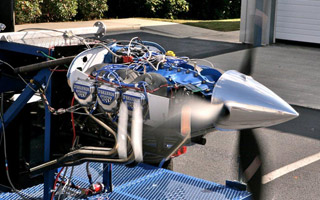 All was not well with the Debonair’s IO-470-LCK engine. A borescope exam of the cylinders revealed pitting and corrosion, which explained the high levels of iron in the airplane’s oil analyses. Basically, the engine had sat idle for so long under the previous owner that the steel cylinder walls had rusted, and that rust wore away as I flew it over the past year. Now it was showing up in the oil as tiny iron particles. Were those particles damaging the camshaft, crankshaft bearings, and other internal components? We didn’t know, and didn’t want to risk it.
All was not well with the Debonair’s IO-470-LCK engine. A borescope exam of the cylinders revealed pitting and corrosion, which explained the high levels of iron in the airplane’s oil analyses. Basically, the engine had sat idle for so long under the previous owner that the steel cylinder walls had rusted, and that rust wore away as I flew it over the past year. Now it was showing up in the oil as tiny iron particles. Were those particles damaging the camshaft, crankshaft bearings, and other internal components? We didn’t know, and didn’t want to risk it.
Although Bonanza/Baron/Debonair expert Adrian Eichhorn pronounced the cylinders fit, we knew deep down that we had to do the right thing. No way were we going to give away an airplane with a questionable engine. So once again D’Shannon Aviation stepped forward with a bold solution: do away with the existing 225-horsepower engine and replace it with a 260-horsepower conversion of the IO-470. In engine designator terms, we’re moving from a Teledyne Continental IO-470-LCK (the -LCK means that it started life as a -L engine and was changed—hence the “-C”—to a -K model during its last overhaul) to a Teledyne Continental IO-470-N.
I flew N75YR to Aero Engines of Winchester, Virginia, in mid-January. Aero Engines, a renowned engine shop in its own right, will remove the bad old engine, take it to the Lake Norman Airpark (14A), then install and apply the finishing touches to the Debonair’s -N upgrade.
The big news here is that all of the original cylinders will be chucked, and replaced with brand-new ECi TITAN cylinder assemblies featuring cylinder bores with the company’s Nickel+Carbide internal coatings. It’ll be goodbye to rusty steel cylinder bores, and hello to more durable, longer-lasting ECi cylinders. ECi cylinders have come under fire by the FAA, which wants to slap an expensive AD on certain ECi cylinders for the Continental IO-520 and IO-550 engines and built between 2002 and 2009—a proposal that AOPA aggressively opposes. Bottom line: we’re giving ECi a vote of confidence by using its -N cylinders on the Debonair.
Email [email protected]
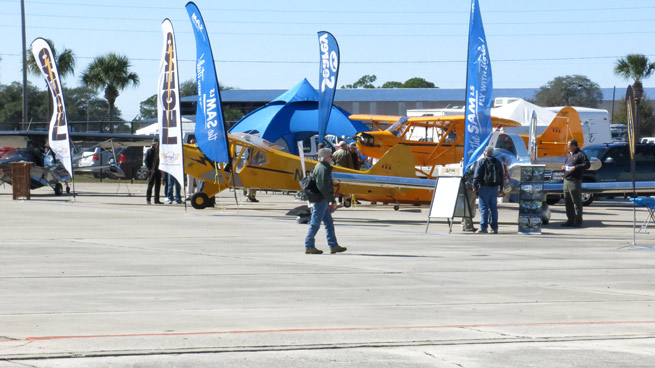 Industry leaders at the U.S. Light Sport Expo in Sebring, Florida, in January were asked to grade the success of the Light Sport Aircraft (LSA) industry now that it has reached its tenth anniversary. Most gave it high marks for innovation, but lower marks for actual sales.
Industry leaders at the U.S. Light Sport Expo in Sebring, Florida, in January were asked to grade the success of the Light Sport Aircraft (LSA) industry now that it has reached its tenth anniversary. Most gave it high marks for innovation, but lower marks for actual sales. 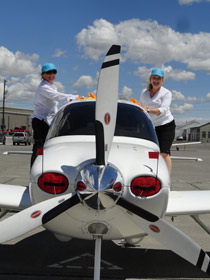 The Air Race Classic—a women’s air racing event with roots dating back to 1929—will launch on June 16 from Concord, California, to New Cumberland, Pennsylvania, by June 19.
The Air Race Classic—a women’s air racing event with roots dating back to 1929—will launch on June 16 from Concord, California, to New Cumberland, Pennsylvania, by June 19.

